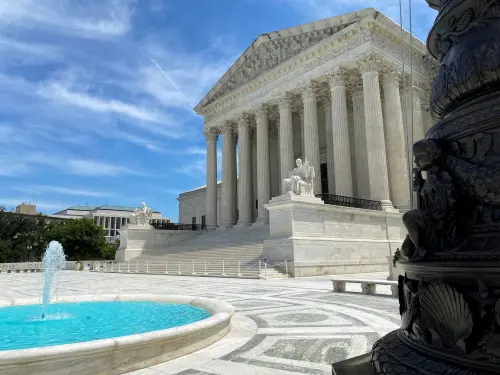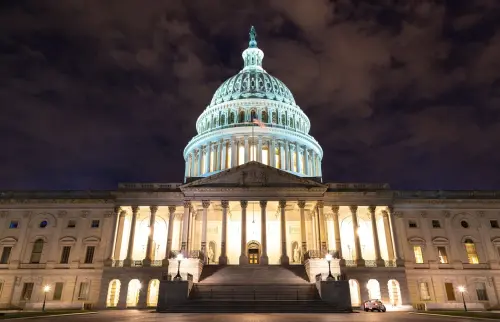A recent American Constitution Society Issues Brief I authored considers various proposals to fix the broken process of filling judicial vacancies during the second Obama term.
As documented in a December Brookings paper, partly updated in the ACS Brief, filling those vacancies in the first Obama term was hampered by the comparative paucity of nominations, especially for the district courts, by the slow pace of those nominations, and by long periods from vacancy to nomination, and from nomination to floor vote. On almost all those measures, the administration’s and the Senate’s performance in Obama’s first term lagged behind those in the Clinton and Bush first terms.
This continuing breakdown in the process has at least two deleterious effects. First, judicial vacancies, which declined in Clinton’s and Bush’s first terms, increased during Obama’s. Empty judgeships hamper the federal courts’ ability to do their jobs—to sort out contractual disputes and other matters that, left unresolved, contribute to economic uncertainty, as well dispose of criminal complaints and adjudicate claims of discrimination and civil liberties violations.
Second, though, the nomination and confirmation process itself has increasingly become a factor discouraging well-qualified potential district and circuit judges from putting themselves up for consideration. The 223 days on average from nomination to confirmation of district judges—up from 154 days in Bush’s first term and 93 in Clinton’s— leads potential candidates, especially lawyers in private practice, to ask whether they can afford to go into nomination limbo for eight months—perhaps much longer—especially when confirmation, unlike in earlier years, is something other than a sure thing. And the job is less attractive: growing caseloads but negligible increases in judgeships over the last several decades, changes in the case mix—more drug and immigration violations in the district courts, for example—and stagnant judicial salaries with declining buying power, a special problem for would-be judges in high-cost areas.
We should not want to return to the average nine days from nomination to confirmation faced by Harding’s nominees, but the roughly 60 to 70 day averages in the Carter and Reagan administrations are a reasonable goal, even if “reasonable” does not mean “attainable.”
The recent Senate rules changes may ameliorate the wait for district judges. Previously, the mere threat of a filibuster over a nomination made any majority leader reluctant to bring a nominee to the floor, because even if the Senate voted to end the filibuster, it faced the possibility of up to 30 hours of debate before a vote on the nomination itself. The rules change reduces that post-cloture debate time for district judges to two hours, which should make the majority leader more likely to risk a cloture vote without fear of squandering a lot of valuable floor time simply to get some district confirmations.
That the rule does not apply to circuit (or Supreme Court) nominees makes a certain perverse sense, in that those nominations have been more contentious. In Obama’s first term, 46 percent of district confirmations were by voice vote or unanimous consent, double the 23 percent of circuit confirmations that went that route. And, on roll call votes, 11 percent of district confirmations received 11 or more negative votes, versus 24 percent of circuit confirmations. The rules change may be a step toward putting district and circuit nominations on different paths, as advocated, for example, by Columbia Law School’s Michael Shenkman.
The rules change, however, does nothing to speed the time from vacancy to nomination, which rose from 370 days on average in Clinton’s first term for district judges and 276 in Bush’s to 406 in Obama’s. During that time, an active rumor mill can spew invidious speculation about potential candidates and their chances of nomination.
This delay results in part from bargaining between home state senators and the White House; the senators’ bargaining bargaining chip is a threat to kill a nominee by refusing to allow Judiciary Committee hearings on a nominee of whom they disapprove. The White House could shed some sunlight on the process by publicizing the status of its negotiations with home state senators over a vacancy (without revealing the names of any potential nominees). Such publicizing would also afford senators an opportunity to contest, publically, White House assertions. The result—equipping editorial writers and others to pressure those standing the in the way of expeditious nominations. (This is another Shenkman proposal.)
The nomination and confirmation process in Obama’s second term may reveal the effect, if any, of the rules change (and, if implemented, publicizing the status of pre-nomination negotiations). They have more promise than other proposals, also analyzed in the ACS Issues Brief, including time tables for the steps in the process and fast-track procedures for nominees endorsed by senators’ allegedly bi-partisan vetting committees.
Bigger changes, however, are highly unlikely in the midst of the second term’s confirmation battles. For that reason, the administration might consider creation of a three-branch, truly bi-partisan task force to develop more substantial proposals that could be debated in the 2016 campaign and perhaps implemented by the next president and the 115th Senate. But implementation is likely only if all parties realize that it is in their self-interest to fix the broken judicial nomination and confirmation process.
The Brookings Institution is committed to quality, independence, and impact.
We are supported by a diverse array of funders. In line with our values and policies, each Brookings publication represents the sole views of its author(s).



Commentary
Filling Judicial Vacancies In Obama’s Second Term—Some Prospects
January 28, 2013